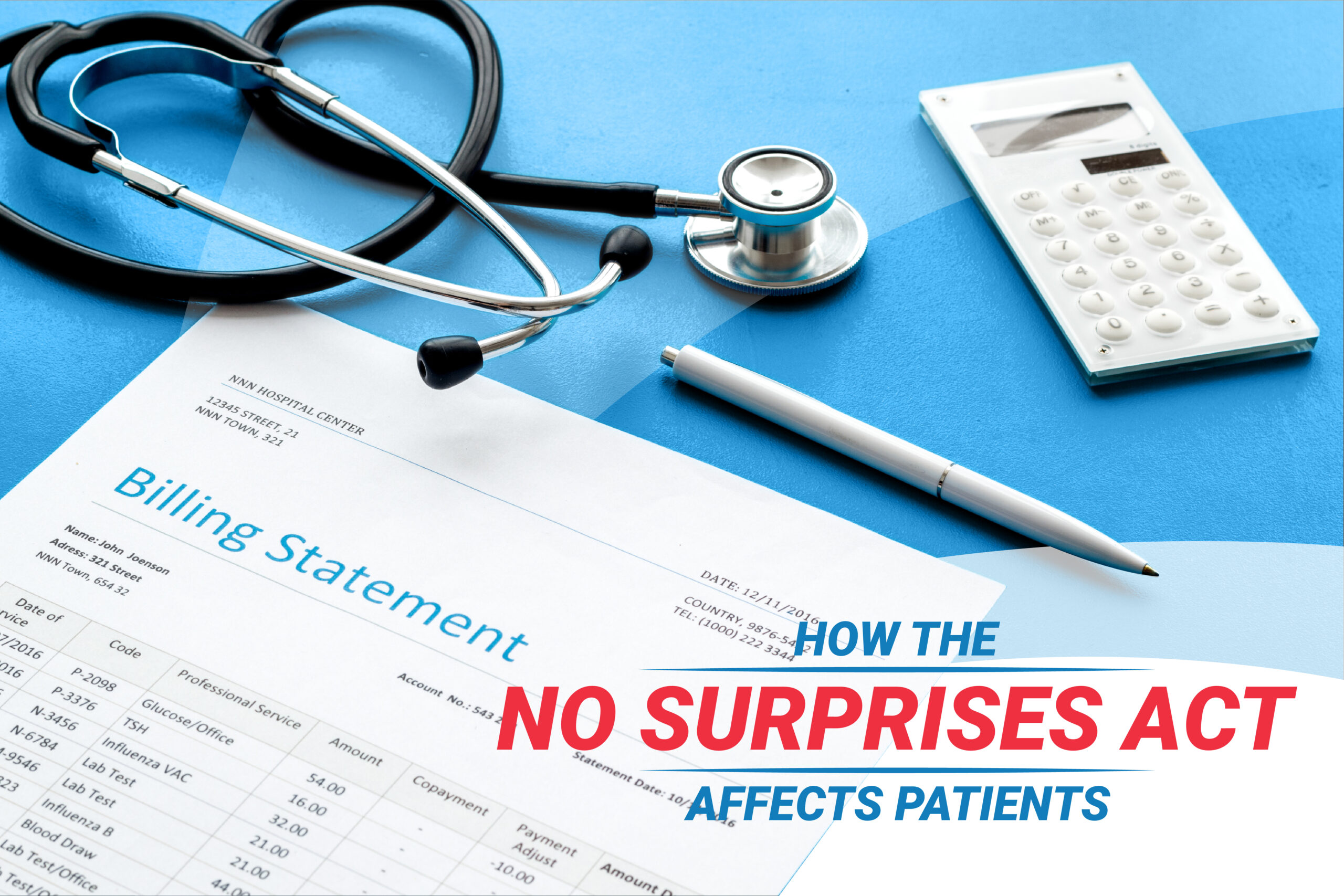As always, we aim to have full transparency with our community and educate our patients on changes in the healthcare industry. In accordance with the Federal No Surprises Act of 2022, you will notice a change in your Explanation of Benefits (EOB). We honor in-network benefits so your EOB will now reflect an adjusted median in-network rate. Should you receive an EOB with amounts applied out of-network, please call your insurance carrier, as this is incorrect processing. Please note that an EOB is not a bill.
Please continue reading for a breakdown of the No Surprises Act.
What is the No Surprises Act?
“The No Surprises Act is really one of the biggest consumer protections to pass in recent decades,” said Loren Adler, assistant director of the USC-Brookings Schaeffer Initiative for Health Policy.
In an effort to protect patients, the federal government issued the No Surprises Act (NSA). The NSA addresses several different points. The most notable point is the NSA serves to prohibit surprise billing. A surprise medical bill is an unexpected bill, often for services received from a healthcare provider or facility, that a patient may not have known was out-of-network with their insurance until a bill is received. Simply stated, an out-of-network provider cannot send a bill to a patient for any amount outside of their yearly in-network deductible and co-insurance. This does not apply to amounts paid directly to patients by their insurance provider for services rendered rather than paid to the provider. In those cases, a patient may receive a bill for full charges until the insurance payment amount is provided or paid over to the appropriate facility by the patient.
The No Surprises Act was issued after lawmakers passed a law to base emergency services payments on local median in-network rates, also known as QPAs, instead of usual and customary rates. The law enacted a system where insurers and providers negotiate the correct amount to be paid. Once in agreement, the bill can be settled through an independent dispute resolution process. Insurers must now disclose how they come to the QPA-median in-network price and if they down-coded the claim for any reason.
What is the Median In-Network Rate?
Median in-network rates are the contracted rates for a given service in the same geographical location within the same insurance market. The median in-network rate is calculated based on current yearly rates for similar services.
What Does This Change for Patients?
When a patient receives their EOB, the number presented should already be adjusted to reflect the median in-network rate. This will give patients a better idea of what they will be paying out of pocket and protect them from a large surprise out-of-network bill. The NSA also puts more responsibility on the insurance carriers to be fair and informative with their insureds.
For more information on the No Surprises Act, please refer to the article published by the experts at USC-Brookings Schaeffer: Understanding the No Surprises Act.
For all your emergent needs, our physician-owned and operated ER & hospital offers low wait times, concierge-level care, a comfortable environment, and other amenities to ensure you get the individualized care you deserve. To learn more about our emergency care, please visit our services page.



